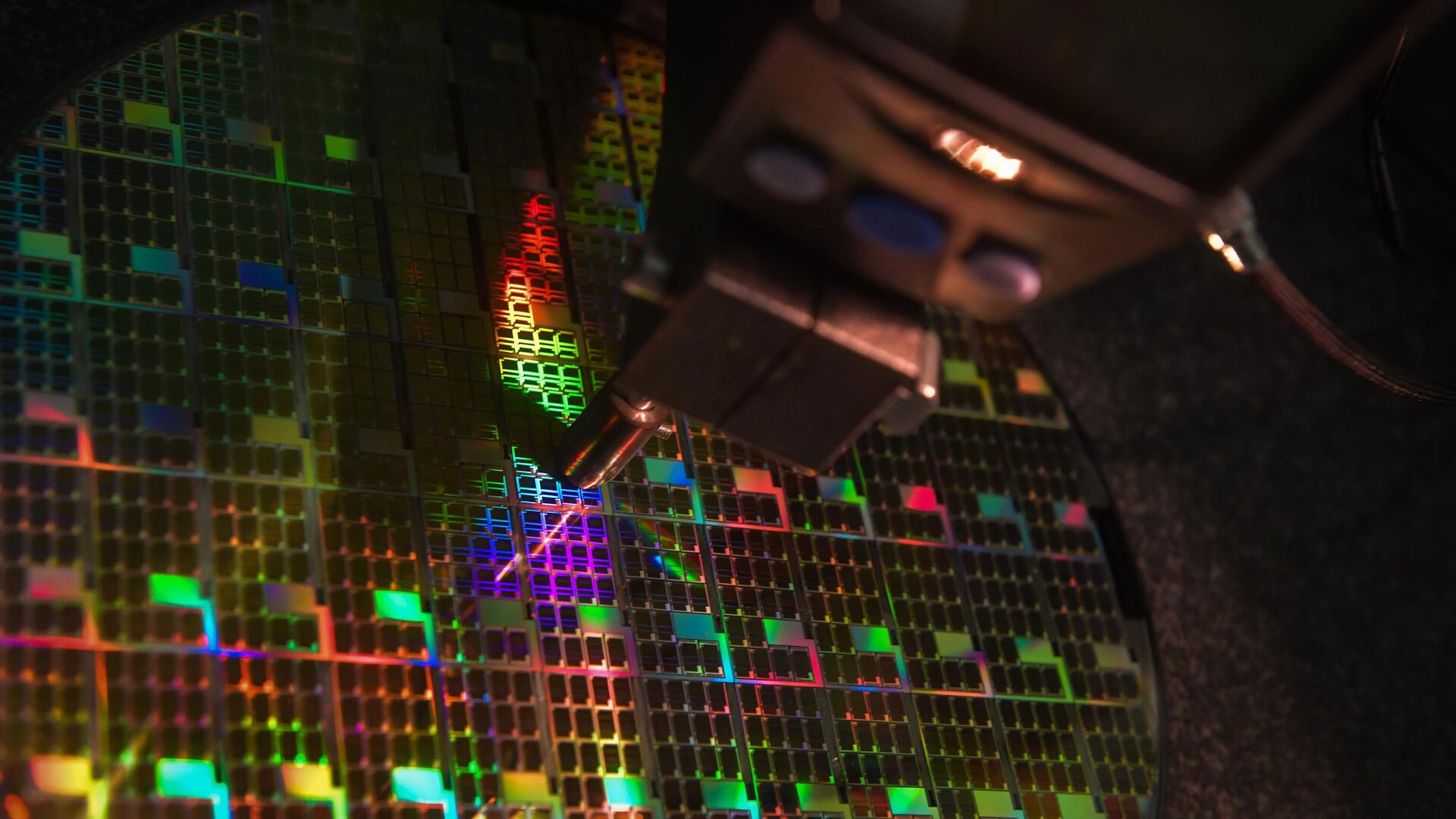https://sputnikglobe.com/20230802/chinese-tech-firms-unveil-new-microchip-production-amid-spat-with-west-1112354567.html
Chinese Tech Firms Unveil New Microchip Production Amid Spat With West
Chinese Tech Firms Unveil New Microchip Production Amid Spat With West
Sputnik International
As competition with China becomes the primary strategic focus of US foreign policy, Washington has looked to cut off Beijing from accessing the world’s premier technologies.
2023-08-02T18:50+0000
2023-08-02T18:50+0000
2023-08-02T18:50+0000
world
china
nvidia
intel
microchip
semiconductors
https://cdn1.img.sputnikglobe.com/img/07e7/07/13/1111991456_0:320:3072:2048_1920x0_80_0_0_3ccbfef9c0d67496bb943c3da0664cc8.jpg
According to reports in Chinese media, Shanghai Micro Electronics Equipment (SMEE) has perfected a 28-nanometer immersion deep ultraviolet (DUV) lithography machine and is expected to begin producing microchips using the technology by the end of the year.The Netherlands-based ASML has been one of the primary suppliers of high-end microchips to Chinese industry, withholding its DUV technology from Chinese producers and, earlier this year, agreeing to abide by US demands to drop its trade with China in high-end microchips altogether. The Dutch company is also under additional US pressure to restrict even further shipments to China, including devices with older chip models, according to US media reports.In addition to the Netherlands, Japan and Taiwan have also faced pressure to curb or cut their trade in microchips with the Chinese mainland. A haphazard move by Washington to summarily ban microchip production by US-connected firms inside China last year was quickly walked back after it became apparent that it would cause complete chaos throughout the global tech market.In Wuxi, a city near Shanghai, a new High-Tech District is hosting a project by Jingjia Microelectronics to develop graphic processing units (GPUs), a type of electronic circuit that’s key to producing phones, computers, and game consoles.Jingjia has claimed to be China's leading GPU developer, although it lags far behind the US-based Nvidia, the world’s largest maker of GPUs. Jingjia was also placed on the US blacklist at the same time as SMEE.Meanwhile, US microchip giant Intel has launched a new project in the southern Chinese city of Shenzhen, a hub of the tech industry, to produce AI-related chips. The company is partnering with six local firms including Ugreen, Senary Technology Group, and Chipsea Technologies, to set up joint labs for research into low-carbon and energy-saving IT solutions, PC and server chips, and smart transport, according to Chinese news reports.“We will further leverage Intel’s technology and ecosystem strengths … facilitate the integration and development of emerging sectors in the Greater Bay Area and across the country … and help develop the digital economy,” Intel China chairwoman Wang Rui said at a launch event.
https://sputnikglobe.com/20230801/chinas-rare-earths-ban-may-sink-us-microchip-manufacturing-ambitions-1112322954.html
https://sputnikglobe.com/20230731/desantis-says-asymmetric-us-china-economic-relations-should-end-1112284821.html
china
Sputnik International
feedback@sputniknews.com
+74956456601
MIA „Rossiya Segodnya“
2023
News
en_EN
Sputnik International
feedback@sputniknews.com
+74956456601
MIA „Rossiya Segodnya“
Sputnik International
feedback@sputniknews.com
+74956456601
MIA „Rossiya Segodnya“
microchip; ultraviolent lithography; semiconductor; smee; china
microchip; ultraviolent lithography; semiconductor; smee; china
Chinese Tech Firms Unveil New Microchip Production Amid Spat With West
As competition with China becomes the primary strategic focus of US foreign policy, Washington has looked to cut off Beijing from accessing the world's premier technologies, forcing Chinese planners to begin the arduous process of fostering a home-grown high tech production market, especially in high-end semiconductor chips.
According to reports in Chinese media, Shanghai Micro Electronics Equipment (SMEE) has perfected a 28-nanometer immersion deep ultraviolet (DUV) lithography machine and is expected to begin producing microchips using the technology by the end of the year.
Like many of China's leading tech firms, SMEE has been blacklisted by the US Department of Commerce for its links to the Chinese government and military, which Washington says could benefit from trade with US firms.
The Netherlands-based ASML has been one of the primary suppliers of high-end microchips to Chinese industry, withholding its DUV technology from Chinese producers and, earlier this year, agreeing to
abide by US demands to drop its trade with China in high-end microchips altogether. The Dutch company is also under additional US pressure to restrict even further shipments to China, including devices with older chip models, according to US media reports.
In addition to the Netherlands, Japan and Taiwan have also faced pressure to curb or
cut their trade in microchips with the Chinese mainland. A haphazard move by Washington to summarily ban microchip production by US-connected firms inside China last year was
quickly walked back after it became apparent that it would cause complete chaos throughout the global tech market.
According to an expert who spoke with Chinese media, such a ban would “greatly affect” Chinese suppliers, as there is an “over-10-year gap” between Chinese lithography machine projects and the best ones from overseas.
In Wuxi, a city near Shanghai, a new High-Tech District is hosting a project by Jingjia Microelectronics to develop graphic processing units (GPUs), a type of electronic circuit that’s key to producing phones, computers, and game consoles.
Jingjia has claimed to be China's leading GPU developer, although it lags far behind the US-based Nvidia, the world’s largest maker of GPUs. Jingjia was also placed on the US blacklist at the same time as SMEE.
Late last year, Huawei also filed a patent for extreme ultraviolet lithography (EUV), the method used to make the world’s most advanced microchips, although the company later dispelled reports that it could produce chips of the highest caliber, which are also the smallest.
Meanwhile, US microchip giant Intel has launched a new project in the southern Chinese city of Shenzhen, a hub of the tech industry, to produce AI-related chips. The company is partnering with six local firms including Ugreen, Senary Technology Group, and Chipsea Technologies, to set up joint labs for research into low-carbon and energy-saving IT solutions, PC and server chips, and smart transport, according to Chinese news reports.
“We will further leverage Intel’s technology and ecosystem strengths … facilitate the integration and development of emerging sectors in the Greater Bay Area and across the country … and help develop the digital economy,” Intel China chairwoman Wang Rui said at a launch event.




